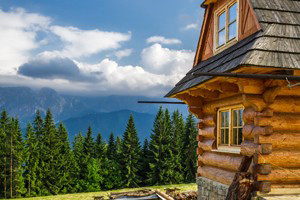- A tributary of the Missouri, the Yellowstone River Montana flows 700 miles from its headwaters above YNP.
- The Yellowstone River’s raging waters in Yellowstone Park create amazing natural features.
- Its lower section is slower and wider, making it great for fishing, floating, and camping.
- This river was explored by William Clark of the Corps of Discovery in 1806.
Overview
Flowing nearly 700 miles, the Yellowstone River is the longest free-flowing river in the lower 48 states. It begins near Yellowstone National Park and ends its flow as it enters the Missouri, reaching 3 states. The upper raging waters create amazing scenic features while the lower sections’ wide flow offers great fishing, and floating opportunities.
Location & Directions
The Yellowstone River begins high in the Rockies above Yellowstone National Park. From its headwaters it feeds and drains Yellowstone Lake, then flows swiftly to Gardiner, Montana. It then enters the Paradise Valley of Park County and onto Livingston. Here, the river begins a more gradual flow, making it ideal for recreation activities. From Livingston on, the Yellowstone parallels I-90 to Billings. The river continues to North Dakota where it joins the Missouri. Visitors in Red Lodge can access the Yellowstone River at Itch-Kep-Pe Park in Columbus (follow Highway 78 north 47 miles). Visitors can view the amazing Lower Falls of the Yellowstone by entering YNP at the North East Entrance, 2 ½ hours south of Red Lodge on Highway 212.
Activities
Fishing
Because of its vast undammed waters and hundreds of tributaries, the Yellowstone River supports a wide array of fish species. This river is a popular fishing destination among fly, lure, and bait fishermen. Some of the fish you can expect to catch in the Columbus area (near Red Lodge) include trout, white fish, burbot ling. Here, the Yellowstone calmer, wide and slower waters provide excellent drift boat and raft fishing.
Floating
Several local vendors offer guided scenic and fishing trips along the Yellowstone. Visitors may also enjoy renting a raft or innertubes and guiding themselves. Locals have turned floating the Yellowstone into an annual celebration known simply as Boat Float. This celebration is a 3 day float in July, where rafters, canoers, kayakers and tubers make their way from Livingston to Laurel. The portage at Reed Point offers live entertainment, dancing, and activities.
Camping
There are several great campgrounds along the banks of the Yellowstone River. Pelican of Greycliff, Indian Fort of Reed Point, and Itch-Kep-Pe of Columbus offer several camp spots with access to the river. Each of these campgrounds offer vaulted toilettes, fire rings, and a boat ramp. Access these campgrounds off I-90 by taking the off ramp at the associated town.
Sightseeing
Some of the Yellowstone’s most impressive features are located in its early stages between Yellowstone Lake and Mammoth (of YNP). The river’s prize Lower Falls has cut an amazing high wall canyon, known as the Grand Canyon of the Yellowstone. Another amazing site to behold along the canyon is the steam that rises from the geothermal spots lining its walls.
Historical Tidbit
In 1806, during the expedition of the Corps of Discovery, William Clark explored the Yellowstone River. Remnants from this expedition have been found along its banks. Today, signs line the trail Clark took in his exploration.






